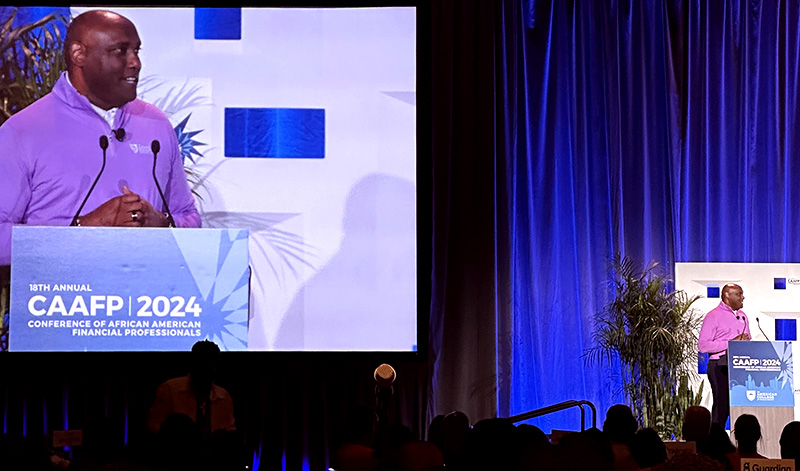Tech alone won’t help financial advisors close the wealth gap – not without addressing the bias that lurks in the tools advisors use.
That was the message at this year’s Conference of African American Financial Professionals in Atlanta. Speakers like Raphael Bostic and Michelle Singletary spoke frankly about the persistent wealth gap in America and the tools that financial advisors can use to create a more equitable financial landscape for their clients.
One session, “Innovate and Elevate: Harnessing Technology, Overcoming AI Bias, and Empowering African American Financial Leaders,” took aim at the potential that generative AI has in this regard – as long as the biases that lurk in the training data are recognized and countered.
The financial services industry increasingly relies on AI to streamline processes, enhance client experiences, and improve operational efficiency. From robo-advisors to risk assessments, AI is at the heart of many client-facing solutions. However, if not properly steered, AI can reinforce existing biases, making it more difficult for minority communities to access the financial tools and services they need.
As the speakers noted, AI bias occurs when models use historical data that may not fully represent all demographics, leading to outcomes that are systemically unfair.
Here are five key steps financial advisors can take to overcome AI bias and help close the wealth gap:
1. AI Still Needs Humans: Still in its infancy, human oversight in AI systems is necessary. Advisors should actively engage in the development and fine-tuning of AI models to ensure they reflect real-world complexities. When AI produces biased outcomes, advisors need to intervene, bringing their expertise to adjust and improve the models. Abandoning AI isn’t the solution—ongoing refinement is.
2. Hold AI Accountable: Transparency is crucial with AI decision-making. Advisors should promote the use of tools like Explainable AI, which provide insight into how algorithms arrive at their conclusions. These tools make it easier to detect and correct biased assumptions, ensuring that AI is aligned with the diverse needs of clients, particularly those from underrepresented groups.
3. Implement Routine Audits and Testing: Just as financial plans need regular check-ins, AI systems should undergo continuous audits. The session underscored the importance of routine testing to ensure AI remains fair and unbiased over time. Advisors should champion regular reviews of AI tools to ensure they continue to deliver equitable outcomes, especially as the financial landscape evolves.
4. Invest in Data Science Expertise: Building diverse teams that include data scientists with a deep understanding of both AI and financial services can be a worthwhile hire. Financial advisors should collaborate closely with these experts to ensure AI models are designed to serve all clients fairly, helping to reduce bias and bridge the wealth gap.
5. Stay Up-to-Date: As AI technology evolves, so too do the professions surrounding it. For example, prompt engineers are emerging as specialists trained to ask AI systems the right questions. Advisors should stay informed about these new roles and make sure they have the right experts in place to ensure their AI strategies align with the needs of their clients and communities.
This year’s conference emphasized the crucial role financial professionals play in addressing the wealth gap. By applying these five strategies, advisors can help reduce AI bias and ensure that technology works to the benefit of all clients. With a proactive approach, financial advisors can leverage AI not just for efficiency, but to promote fairness and create lasting, positive change in the communities they serve.
